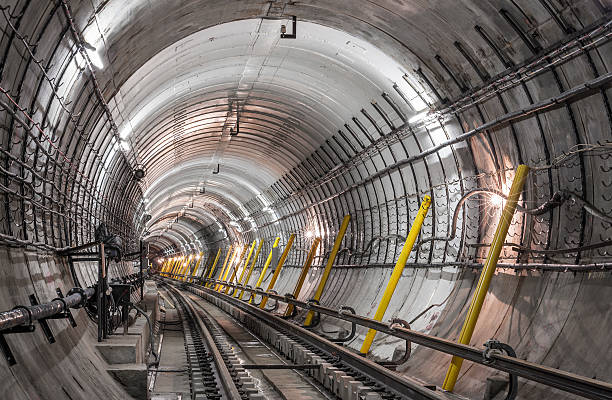The world beneath our feet holds vast potential for infrastructure development, transportation networks, and utilities distribution.
As urbanization continues to grow, the demand for efficient and sustainable underground construction projects is on the rise.
One of the key components driving the success of such projects is tunneling equipment. With the advent of advanced technologies, tunneling equipment is experiencing a transformation, ushering in a new era of efficiency, safety, and precision in underground construction.
Automation and Remote Operation
One of the most prominent trends in tunneling equipment is the integration of automation and remote operation technologies. Traditionally, tunneling involved the hands-on work of skilled operators, often in challenging and hazardous environments. However, advancements in robotics, sensors, and communication technologies have led to the development of tunneling machines that can be remotely operated or even operate autonomously.
Automated tunneling machines can perform repetitive tasks with precision, reducing the risk of human error and improving overall project efficiency. Remote operation not only enhances worker safety by allowing operators to control the equipment from a safe distance but also extends the reach of tunneling projects to more inaccessible or hazardous locations.
Tunnel Boring Machines (TBMs) with Enhanced Capabilities
Tunnel Boring Machines (TBMs) are the workhorses of underground construction, and recent trends are geared towards enhancing their capabilities. Modern TBMs are equipped with advanced cutting tools, monitoring systems, and data analytics to optimize excavation processes.
These machines can adapt to various ground conditions, adjusting their operations in real-time based on the encountered soil and rock properties.
Additionally, miniaturized TBMs are gaining popularity for projects with space constraints or those requiring minimal surface disruption. These smaller TBMs allow for efficient tunneling in urban areas without causing major disturbances to the surrounding environment.
Integration of Real-time Monitoring and Data Analytics
The marriage of tunneling equipment with real-time monitoring and data analytics has revolutionized underground construction projects. Sensors embedded within tunneling equipment collect a wealth of data related to ground conditions, machine performance, and safety parameters. This data is then processed and analyzed to provide insights that can improve decision-making and project management.
For instance, the horizontal directional drill incorporates cutting-edge automation and real-time monitoring, revolutionizing underground construction projects by enabling precise and efficient tunneling in challenging environments while prioritizing safety.
Tunneling in Challenging Environments
The demand for tunneling in challenging environments such as densely urbanized areas, earthquake-prone regions, and underwater locations has led to the development of specialized tunneling equipment. These machines are designed to withstand unique conditions and execute precise excavation.
In earthquake-prone regions, for instance, seismic-resistant TBMs have been developed with features that mitigate ground shaking effects. Additionally, tunneling beneath bodies of water has prompted the innovation of underwater tunneling equipment that can operate while submerged, ensuring safe and efficient construction of submerged tunnels.
Sustainable and Environmentally Friendly Solutions
Emerging trends in tunneling equipment are also aligning with the growing emphasis on sustainability and environmental responsibility. Tunneling projects often involve the disposal of excavated materials, but innovative equipment is now being designed to recycle and repurpose these materials. The development of tunneling equipment that can crush and reuse excavated rock as construction aggregate on-site reduces the need for transporting materials and minimizes environmental impact.
Furthermore, the integration of electric and hybrid power systems in tunneling equipment reduces emissions and noise pollution, making underground construction projects more environmentally friendly and socially acceptable.
The evolution of tunneling equipment is shaping the future of underground construction projects. Automation, remote operation, real-time monitoring, and data analytics are transforming traditional tunneling processes, enhancing efficiency, safety, and project outcomes. Specialized equipment for challenging environments and a focus on sustainability underscore the industry’s commitment to responsible infrastructure development.
As urban populations continue to grow, the need for efficient transportation networks, utilities, and underground spaces will only increase. Tunneling equipment’s adaptability and innovation will play a pivotal role in meeting these demands while ensuring minimal disruption to the environment and communities.
The merging of advanced technologies with tunneling equipment is unlocking new possibilities for underground construction, promising a brighter and more connected future beneath our cities.
Also Read

